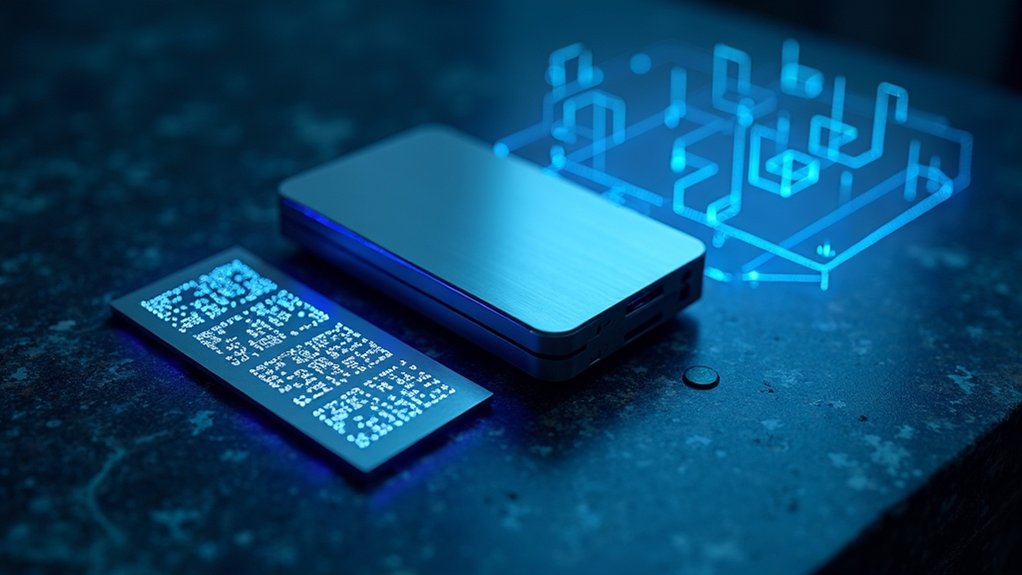Ordinals are Bitcoin’s answer to NFTs, but way more hardcore. They assign unique numbers to individual satoshis (Bitcoin’s smallest units), transforming them into digital artifacts with inscriptions baked directly onto the blockchain. Unlike Ethereum NFTs, Ordinals don’t need smart contracts—they leverage Bitcoin’s Taproot upgrade to store images, text, or audio permanently on-chain. No external databases, no links that break. Just pure, immutable digital artifacts causing quite the stir in Bitcoin’s once transaction-only world. The rabbit hole goes deeper.
The crypto world never sleeps.
Just when you thought Bitcoin couldn’t get any more interesting, along came Ordinals.
They’re changing the game.
Again.
Ordinals assign unique serial numbers to individual satoshis—the smallest units of Bitcoin—turning them into digital artifacts with special characteristics.
Every satoshi becomes its own digital masterpiece through Ordinals, transforming Bitcoin’s smallest units into collectible artifacts with unique identities.
Unlike your regular Bitcoin transaction, these babies carry more than just value.
Think of Ordinals as Bitcoin’s answer to NFTs, but with a twist.
They’re not tokens.
They’re inscriptions embedded directly onto satoshis.
Similar to how cardinal numbers measure quantities in mathematics, Ordinals measure position and rank in the Bitcoin blockchain.
No smart contracts needed.
No external databases.
Just pure, unadulterated Bitcoin blockchain permanence.
Pretty neat, right?
The numbering system behind Ordinals is meticulous.
Each satoshi gets its own ordinal number based on when it was mined.
These numbers form a four-part degree system tracking cycles, blocks, and positions.
Some satoshis are rarer than others.
Collectors love that sort of thing.
Inscribing an Ordinal isn’t like sending Bitcoin to your buddy.
It’s a technical process leveraging Bitcoin’s Taproot upgrade to store complex data—images, text, audio, whatever—directly on the blockchain.
Once inscribed, that data is there forever.
Immutable.
Permanent.
For better or worse.
Traditional NFTs on Ethereum or Solana rely on smart contracts.
Ordinals don’t.
They’re simpler but potentially more robust, piggybacking on Bitcoin’s legendary security.
No smart contract bugs to worry about.
Just Bitcoin doing what Bitcoin does best: securing data.
The technical implications are significant.
Ordinals live inside Bitcoin blocks, taking up space, sparking debates about network sustainability.
Tens of millions of inscriptions already exist.
That’s a lot of data on a blockchain originally designed for financial transactions.
Ordinals represent a fascinating evolution in Bitcoin’s functionality.
They’ve turned satoshis into collectibles, art pieces, and more.
Each transaction utilizing the Ordinals protocol is processed through Bitcoin’s proof of work mining system, reinforcing their security and permanence.
Unlike traditional NFTs that often store only metadata links on-chain, Ordinals store entire data files directly on the Bitcoin blockchain, ensuring complete immutability.
Love them or hate them, they’re pushing Bitcoin beyond simple value transfer into new territory.
The crypto world keeps turning, surprising even the veterans.
Frequently Asked Questions
How Do Ordinals Affect Bitcoin’s Transaction Fees?
Ordinals have driven Bitcoin’s transaction fees through the roof. These NFT-like inscriptions clog the network with data-heavy transactions, creating unprecedented congestion.
Average fees skyrocketed 25 times higher during peak activity, reaching a painful $18 per transaction.
Miners are loving it. Regular users? Not so much.
The mempool backlog means slower confirmations for everyone. BRC-20 tokens are particularly problematic, triggering bidding wars as users compete for limited block space.
Can Ordinals Be Stolen or Hacked?
Ordinals themselves can’t be “stolen” like traditional assets, but they’re vulnerable to spoofing attacks. Bad actors can create fake inscriptions that mimic legitimate websites, tricking users into sending Bitcoin to fraudulent addresses.
The real danger? HTML and scripts within Ordinals enable cross-site scripting attacks. Phishing scams are rampant.
Someone hosts a convincing ord server under a trusted domain, and boom—you’re sending your precious Bitcoin to a thief. Classic internet scam, blockchain edition.
Which Wallets Support Ordinals?
Several wallets support Bitcoin Ordinals.
Xverse Wallet offers multi-platform support with rare satoshi detection and hardware wallet integration. UniSat Wallet provides noncustodial management with a unique “Unconfirmed NFTs” preview feature. Ordinals Wallet emphasizes security with two-factor authentication and cold storage. Leather Wallet (formerly Hiro) manages Ordinals alongside other Bitcoin assets.
All require Taproot addresses for compatibility. Most connect to marketplaces like Magic Eden and Gamma for trading these digital collectibles.
Are Ordinals Taxed Differently Than Regular Bitcoin?
No. Ordinals face identical tax treatment as regular Bitcoin.
They’re both considered property by the IRS.
Receiving free Ordinals? Taxable income at fair market value. Selling them? Capital gains or losses apply.
Same old crypto tax rules. Nothing special, nothing unique.
The only real difference? Record-keeping might be trickier since exchanges don’t always provide formal reporting for Ordinals. Tax software recommended.
The IRS doesn’t care about your fancy Bitcoin NFTs—they just want their cut.
How Do Ordinals Compare to Ethereum NFTS?
Ordinals and Ethereum NFTs differ greatly. Bitcoin Ordinals store data directly on-chain, making them truly immutable. Can’t change ’em. Period.
Ethereum NFTs mostly keep data off-chain using IPFS.
Ethereum’s smart contracts enable programmable features like royalties and DeFi integration. Ordinals? Nope. Just inscriptions without fancy code.
The Ethereum ecosystem offers better liquidity and marketplace support. Ordinals are newer, clunkier to trade. But they benefit from Bitcoin’s rock-solid security and lower transaction costs.









